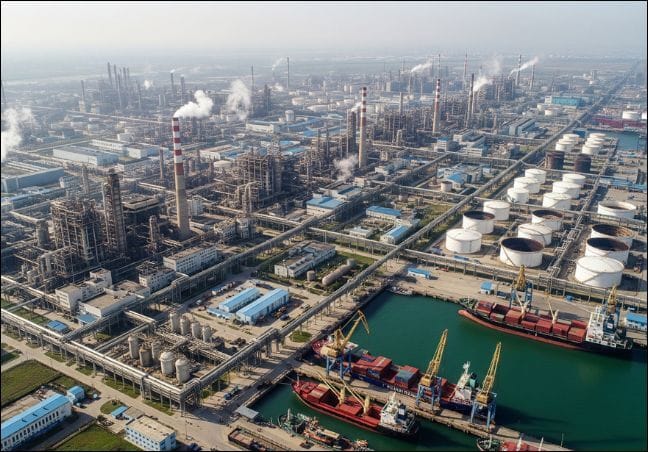- Hydrogen Rising
- Posts
- Africa’s green hydrogen sector embraces clustering
Africa’s green hydrogen sector embraces clustering

From the newsletter
Namibia has announced the designation of Arandis and the Port of Walvis Bay as strategic hydrogen hubs, reinforcing a growing continental trend toward place-based industrial ecosystems. As countries move from planning to implementation, clustering is emerging as a preferred model to drive green hydrogen development across Africa.
Clustering is increasingly seen as a way to scale green hydrogen infrastructure efficiently, by concentrating production and logistics in shared industrial zones.
Countries are anchoring projects in ports and corridors to reduce permitting delays, attract capital and accelerate implementation.
More details
Speaking on July 3 at a stakeholder meeting in the area, Namibia’s Deputy Minister of Urban and Rural Development, Evelyn Nawases-Taeyele, confirmed that Arandis and the Port of Walvis Bay will play a central role in the country’s green hydrogen ambitions, as Namibia enters the final phase of its national strategy.
Namibia’s move to designate Arandis and the Port of Walvis Bay as key green hydrogen hubs aligns with a growing continental shift toward clustering, a model in which production, processing and export infrastructure are co-located in connected zones to improve efficiency. By concentrating activities within defined geographic corridors, clustering enables faster permitting, lower development costs and stronger investor confidence, creating scalable and investable project ecosystems.
The June 2025 African Green Hydrogen Report by GIZ highlights clustering, especially through Special Economic Zones (SEZs), as a strategic pathway to unlock Africa’s hydrogen potential. The concept of Hydrogen Valleys has emerged in this context, linking upstream generation with midstream processing and downstream industrial use. These hubs enable shared infrastructure, reduced transaction costs and improved coordination across the hydrogen value chain.
Moreover, by positioning clusters near ports and aligning them with trade corridors, countries can enhance export readiness and tap into international funding and technology partnerships. Co-locating hydrogen producers with industrial off-takers also supports sectoral decarbonisation and minimises transmission inefficiencies, reinforcing clustering as a tool not just for efficiency but for integrated green industrial growth.
In Namibia, Arandis, located in the solar-rich Erongo region, offers ideal conditions for upstream hydrogen and ammonia production. On the other hand, Walvis Bay, the country’s main deepwater port, plays a complementary role by enabling the export of green hydrogen derivatives to international markets. Together, these sites form an integrated inland, coastal cluster, reflecting global best practices and positioning Namibia as a first mover in Africa’s hydrogen economy.
This setup aligns with Namibia’s National Green Hydrogen Strategy, which calls for the development of three Hydrogen Valleys—Southern, Central and Northern—each designed as a hub for renewable energy and green industrialisation. Arandis and Walvis Bay fall within the Central Valley.
In South Africa, a clear clustering model is taking shape. The Hydrogen Society Roadmap and Hydrogen Valley initiative have identified three major hubs, Johannesburg, Durban and Mogalakwena/Limpopo, as part of a corridor-based cluster linking production and use. In parallel, Special Economic Zones such as Coega in the Eastern Cape are enabling zone-based clustering, with the Hive Hydrogen green ammonia project serving as a flagship example of how shared infrastructure and targeted investment zones can accelerate project development.
Up north, Egypt has adopted a comparable strategy through the Suez Canal Economic Zone, now a focal point for hydrogen development. Most of Egypt’s large-scale hydrogen and ammonia projects are planned within this corridor, combining renewable power generation, electrolysis, synthesis and export logistics.
In neighbouring Morocco, a clustering model is emerging in regions like Guelmim-Oued Noun and Dakhla, where large tracts of land have been allocated for integrated hydrogen projects combining solar, wind, desalination and ammonia production. These zones are underpinned by streamlined permitting frameworks and are actively marketed to international investors.
Similarly, Mauritania is advancing integrated mega-projects like AMAN near Nouadhibou, the country’s main commercial port and second-largest city. Strategically located on the Atlantic coast, Nouadhibou offers deepwater access for exports and lies close to strong wind resources and vast land for renewable energy. By co-locating wind power, hydrogen production and export infrastructure, Mauritania is creating a project-based cluster with direct access to global markets.
Together, these developments reflect a continental trend toward place-based green hydrogen ecosystems. By clustering activity in ports, SEZs and industrial corridors, African countries are laying the groundwork for scalable infrastructure, stronger project bankability and meaningful local value creation.
Our take
It’s commendable that countries are embracing clustering not only as a planning framework but also as a strategic way to cut costs and improve project viability.
African countries should pursue cross-border green hydrogen industrial clusters to reduce costs, localise manufacturing, boost efficiency, foster innovation and build globally competitive value chains through shared infrastructure and regional synergies.
The emergence of hydrogen clusters across Africa signals a shift from vision to implementation. It shows that countries are no longer just exploring hydrogen potential, they are building structured ecosystems to compete globally.